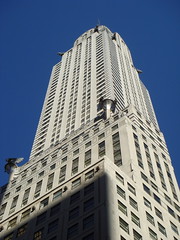
Chrysler Building in New York NY
Our Gallery
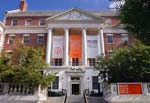 Museum of the City of New York 1220 Fifth Avenue at 103rd Street New York, NY 10029 Phone: 212-534-1672 Email: info@mcny.org Web: www.mcny.org The Museum of the City of New York is a must visit for anyone interested in the past, present and future of this great city. Celebrating New York’s cultural diversity, this museum has rich collections, lively exhibits and very informative programs for adults and children alike. The character of all five boroughs is brought to life, showing how all parts of New York help build its singular character as one of the world’s largest and most important cities. Open: |
Robert Moses and the Modern City: Remaking the Metropolis
February 1 through May 28, 2007
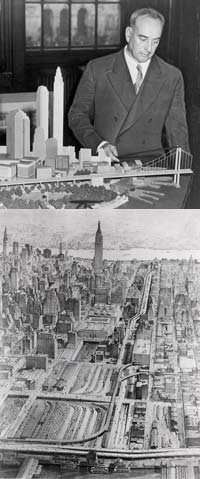 From 1934 to 1968, Robert Moses had a profound affect on the modern shape of New York City. Believing that “the city must be saved,” Moses began to transform not only the roads and bridges, but how New Yorkers lived their lives. Moses built a new transportation network to bring people into the city, including the Triborough Bridge, the Henry Hudson Parkway and the Cross Bronx Expressway.
From 1934 to 1968, Robert Moses had a profound affect on the modern shape of New York City. Believing that “the city must be saved,” Moses began to transform not only the roads and bridges, but how New Yorkers lived their lives. Moses built a new transportation network to bring people into the city, including the Triborough Bridge, the Henry Hudson Parkway and the Cross Bronx Expressway.
Moses also helped make New York City a cultural capital of the world, by initiating the Lincoln Center for the Performing Arts and building the United Nations. And for the everyday New Yorker, he lead an aggressive program to revitalized city parks, including Central Park. But all this development came at a cost.
The exhibition explores some of Moses’s more controversial visions of the city that disrupted traditional neighborhoods and increased the city’s dependence on the automobile.
Robert Moses finally faced public protests over some of his most ambitious projects. The straw that broke the camel’s back was his idea to take Fifth Avenue through the city’s beloved Washington Square Park, and his more outrageous idea to put an elevated highway through Lower Manhattan. But out of the ashes of his defeat, a new era of urbanism based on neighborhood values and community control emerged setting the stage for modern day development.
But without Robert Moses’s guiding hand, the Big Apple would definitely not shine so bright and owes it modern image to this controversial visionary.
Included in this exhibit are:
- Andrew Moore photographs of Riverside Park and the Cross Bronx Expressway, among others.
- A large-scale model (269” x 86”) designed by the I. M. Pei-based firm of Webb & Knapp, not seen since the 1950s, showing Moses’s proposal for the entire Midtown Expressway
- Proposals for the Lower Manhattan Expressway and Fifth Avenue extension through Washington Square Park, which drew intense public outcry
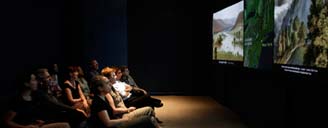
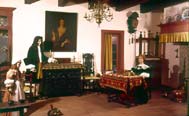 New York Interiors
New York Interiors
This is an ongoing exhibit.
Ever wonder what life was like in New Amsterdam? Now you can find out in this exhibit of domestic environments dating from the early Dutch colony to the early 20th century. Realistic furniture and clothing from different periods will transport you and your family to households through-out New York City’s fascinating history.
New York Toy Stories
This is an ongoing exhibit.
Explore New York childhood through toys, games, cast-iron vehicles and the Stettheimer doll house—all owned or made by New Yorkers.
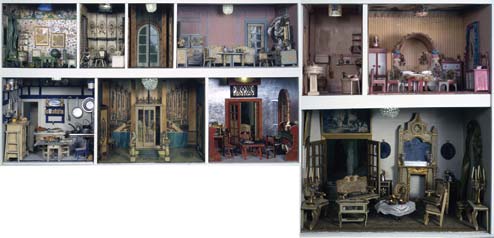
Protect
This is an ongoing exhibit.
Located on the lower lever of the Museum of the City of New York, the fascinating Fire Gallery is home to the Protect exhibit. Dedicated to the city’s fire protection programs and corresponding water supply system, you can see first-hand the trials and tribulation faced by the brave fire fighters of New York City. Photographs and pictures document the journey for public safety from the 17th century to present day. One of the more interesting pieces is a wooden water pipe made out of a pine log. At its height around 1800, New York City had over 25 miles of wooden pipes carrying water from the Collect Pond (between Pearl and White Streets) to over 2,000 households and businesses south of Bleeker Street. Also on display are authentic leather buckets of the famous “bucket brigades,” as well as exhibits showing how major fires helped shaped the city we see today. This is a must see exhibit for anyone interested in the great history of the New York City Fire Department.
 New York Transit Museum Corner of Boerum Place and Schermerhorn Street Brooklyn, NY 11201 Phone: 718-694-1600 Web: www.mta.info Tuesday – Friday: 10 a.m. to 4 p.m. Saturday and Sunday: Noon to 5 p.m. Closed Mondays and major holidays Admission: Adults: $5 Children 3–17 years of age: $3 Senior Citizens (62+): $3 Seniors Free Wednesdays New York Transit Museum Gallery Annex & Store at Grand Central Terminal |
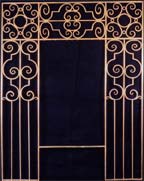 classical architecture using elements of ceramics, metal and wood. Their primary goal was to bring beauty to the stark utilitarian spaces being built by the engineers. They adorned each station with their own unique style of identification plaques and interiors. The crown jewel was the old City Hall Station where arched tiled ceilings, skylights and brass chandeliers created a grand cathedral feel, and is still one of the New York City subway’s most spectacular spaces.
classical architecture using elements of ceramics, metal and wood. Their primary goal was to bring beauty to the stark utilitarian spaces being built by the engineers. They adorned each station with their own unique style of identification plaques and interiors. The crown jewel was the old City Hall Station where arched tiled ceilings, skylights and brass chandeliers created a grand cathedral feel, and is still one of the New York City subway’s most spectacular spaces. 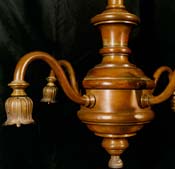 In 1907, Heins died of meningitis, and LaFarge would only work on the subway until 1908. But before they handed the controls over to Squire Vickers, they would make a lasting imprint on the aesthetics of the New York City subway system. So if you like vintage ceramics, do not miss the works of the noted firms of The Guastavino Fireproof Construction Company, Grueby Faience Company of Boston, Atlantic Terra Cotta of Staten Island and Rookwood Pottery Company of Cincinnati. This might be your only chance to view these turn-of-the-century tiles. Pieces in the exhibit include ceramics for numerous subway stations, the original Lion House at the Bronx Zoo, mosaic examples from the 33rd, 110th and 116th street stations and magnificent glass pieces of the grand City Hall subway station and the Belmont Chapel of the Cathedral of Saint John the Divine.
In 1907, Heins died of meningitis, and LaFarge would only work on the subway until 1908. But before they handed the controls over to Squire Vickers, they would make a lasting imprint on the aesthetics of the New York City subway system. So if you like vintage ceramics, do not miss the works of the noted firms of The Guastavino Fireproof Construction Company, Grueby Faience Company of Boston, Atlantic Terra Cotta of Staten Island and Rookwood Pottery Company of Cincinnati. This might be your only chance to view these turn-of-the-century tiles. Pieces in the exhibit include ceramics for numerous subway stations, the original Lion House at the Bronx Zoo, mosaic examples from the 33rd, 110th and 116th street stations and magnificent glass pieces of the grand City Hall subway station and the Belmont Chapel of the Cathedral of Saint John the Divine. 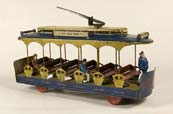 up and spring driven toys, some dating back as far as 1880. It might be hard to believe, but this exhibit also includes some toy trains that were actually steam driven.
up and spring driven toys, some dating back as far as 1880. It might be hard to believe, but this exhibit also includes some toy trains that were actually steam driven. 
| Jobs | 5 | Real Estate - Sale | 0 | |
| Real Estate - Rent | 0 | Buy / Sell / Trade | 0 | |
| Personals | 0 | Automotive | 0 | |

| Daily Poll | ||
|